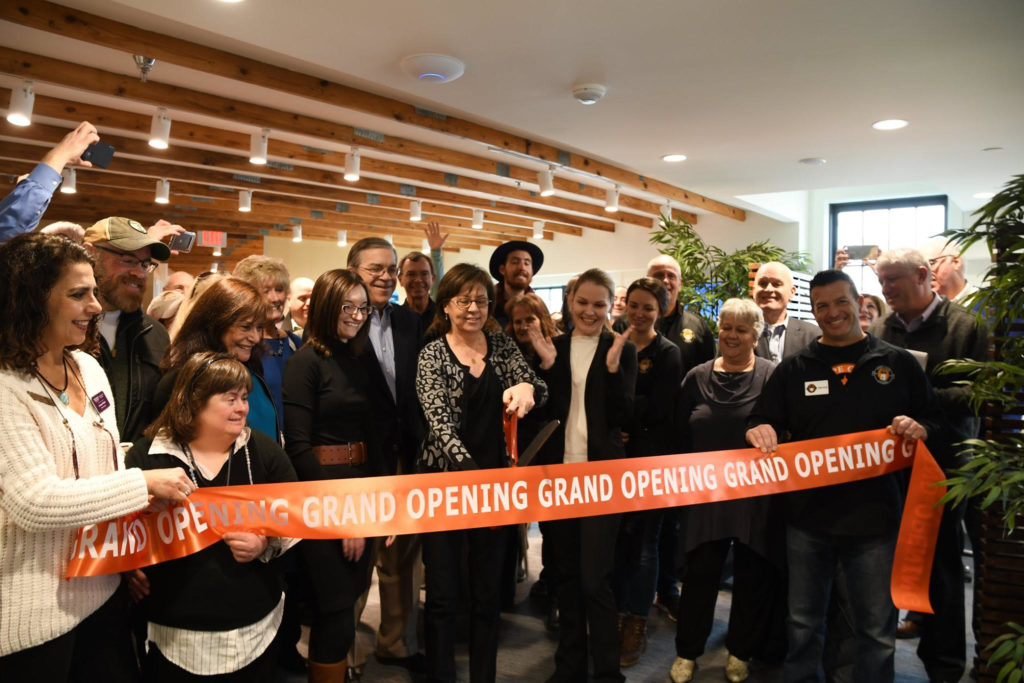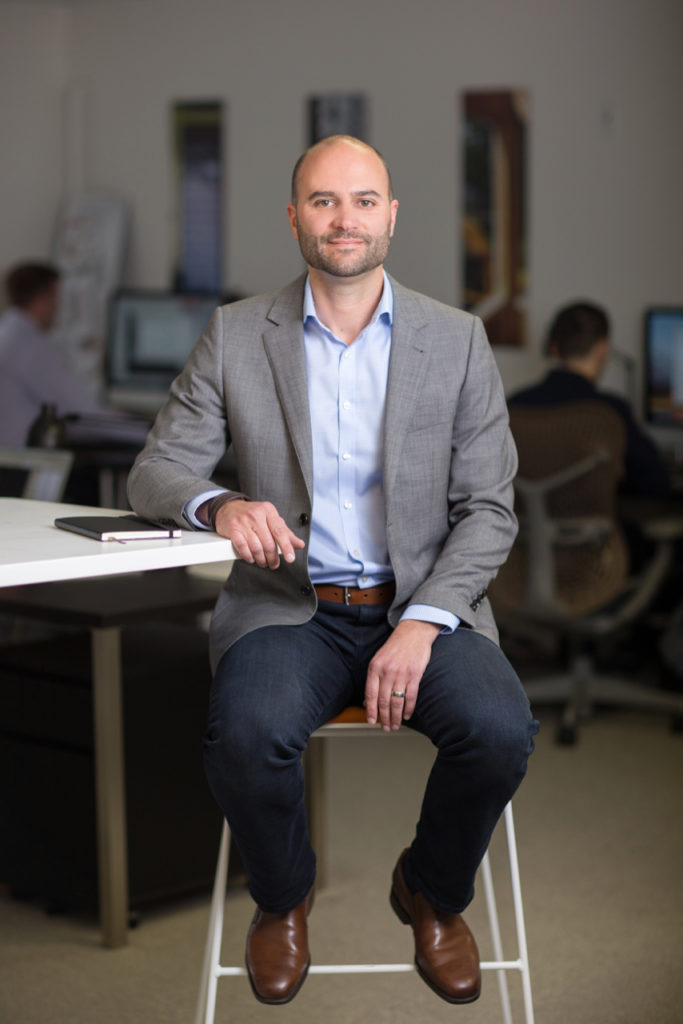Robbin Orbison moved to the Cape six years ago, with plans to continue her career as a real estate developer, working from home.
“I went crazy in the house,” she says.
So she changed her plans and founded CapeSpace, a full-service shared workspace. She spent a year planning, opened the first location on Independence Drive in Hyannis in 2016, and a second location in Mashpee Commons in 2019.
According to Orbison, what motivated her to start CapeSpace is also the number one reason people go to co-working spaces: to get out of the house and be around other people.
With the advent of COVID-19, Orbison thinks demand for shared workspaces will only increase.
The COVID-19 pandemic changed the way we work. Many offices were closed for months when the pandemic hit the country this past spring and many have yet to open to full capacity, given constraints about social distancing in the workplace. Companies had to rethink layouts and make sure there was ample distance ( 6 feet) between workstations, for example. Some companies may opt for remote workforces, putting a dent in conventional office spaces altogether.
The health crisis forced a rapid redesign of commercial office spaces, accelerated a trend toward flex work schedules and highlighted the importance of a well-designed home office.
“COVID forced companies to develop remote work plans, they found it works pretty well. Everyone is predicting a major shift in the way employers house employees, and that shift will consist of multiple work locations,” Orbison says.
Having multiple locations might mean employees stay mostly at home, have occasional meetings at headquarters, and also have the option of using a shared office near their home that doesn’t require mass transit.
“Flex operators like me will fill the gap,” she says.
Without the COVID-19 pandemic, Orbison says this new approach would have taken years to evolve.

The concept of shared workspaces has been around about 50 years, and was invented by California lawyers who needed professional office space. Back then, says Orbison, the offices were private and had a corporate look – think cherrywood desks and burgundy upholstery.
Fast forward to the financial crisis of 2008, when hundreds of thousands of workers were displaced, forced to work freelance or work from home.
“When that happened the industry exploded,” says Orbison. Locations have doubled every year since 2010.
A new model evolved: one with open shared space, less corporate atmosphere, and a strong Internet connection.
“It looked a lot more like a cross between a library and a coffee shop,” she says.
The shared office approach offers many advantages.
To begin with, it helps solve the skills gap. Orbison notes that there is a shortage of employees with tech skills. A flexible, remote approach appeals to such employees, and allows employers to tap a wider geographic region.
“Talent gets what talent wants, and what they want is flexibility. They don’t want to get on the train to the crowded city,” says Orbison.
Distributing office space to multiple locations also reduces the risk of having a single central office located in a pandemic hotspot that’s forced to close.
Flex offices like CapeSpace also relieve companies of the burden of having to maintain office space. Orbison notes that flex office space is 30 percent to 40 percent less expensive than traditional office space.
“The cost is peanuts compared to office space on State Street in Boston. All of these things point to flex being a bigger part of facilities managers’ offerings,” she says.
While in the short term, the COVID-19 shut-down has hurt business for operators of flex office spaces, Orbison says her business has been “hanging in there,” and has lost about 30 percent of its members. But she predicts that coworking spaces that can ride out the crisis period will come through with positive results. Workstations and community seating were redesigned at CapeSpace so seats are 6 feet apart, and privacy partitions were installed. Signage and floor decals were added to remind people about social distancing and sanitary practices.
Office Redesign
In response to the physical distancing required by the pandemic, traditional office spaces are undergoing a redesign.
Chris Brown is the principal of b Architecture Studio, with offices in Osterville and Winchester. The firm, founded 10 years ago, designs private homes as well as restaurants, private schools and offices.
“Our studio space is really collaborative, but now we realize we have to distance ourselves,” says Brown of his own firm’s offices.
His firm accomplished that by staggering staff and rearranging the furniture to create more space between people. “Every office is needing to do that,” he says.

“The open plan will be very hard to do,” says Brown. Whereas communal tables in office design have been a buzz word in recent years, allowing for a collegial back and forth, that may no longer be possible.
“We’re trying to figure out how to have that collaboration while being six feet away,” he says. “You’re not going to fill an eight-person conference table, you’ll have three or four.”
For his restaurant designs, Brown says the key is to create flexibility. He designs his restaurant interiors so the furniture can be removed without ruining the design. “It’s evolving. It’s a really interesting time to do this work. I have a hunch we’ll design for normalcy but have flexibility, “ he predicts.
The COVID-19 pandemic, he says, has had a silver lining. “It made us think about what we do.”
Rather than send two or three employees to a project site to take measurements, a new laser system only requires one person to operate and take measurements of a work site to create three-dimensional models.
“Come March and COVID-19 a lightbulb went off and we said, ‘let’s think about this more and see what we can do. We wanted to be sensitive to the folks who work here,” he explains. “Now one person comes into a home, not two or three, and they don’t have to touch a thing. It’s super precise.”
The Home Office
Prior to the pandemic, many only dreamed of working from home, avoiding long commutes, dressing casually, and having flexibility. But when forced to do so for months on end due to the “shut-down,” they may have realized it’s not all it’s cracked up to be. There’s an art to working from home.

Duncan Berry, a marketing consultant who works out of his home office in West Harwich, has mastered that art.
Berry’s home office is located in a Greek Revival house that has been in his family since 1850. Adjoining his office is the former studio of his late father, nationally syndicated editorial cartoonist Jim Berry (1932-2015), creator of “Berry’s World,” a feature that ran every day for more than 40 years. His father began working from home when Berry was 10, and this certainly influenced his decision to “fly solo.”
Berry transformed his office – once a woodshed, then a bar, and later a hallway, into a very personal office that is both efficient and nurturing.
Berry’s gray-green office is furnished with domestic fixtures so it doesn’t seem like an office.
Oriental carpets are laid over a traditional spatter painted floor. The room is decorated with old family photos, a painting of his great great uncles’s clipper ship, and maps that speak to this 12th generation Cape Codder’s roots. Other framed artwork reveals Berry’s interest in German architecture. There’s a framed photo of Alfred P. Sloan, Jr., a business hero of Berry’s, and a man who hand-picked his grandfather to work at General Motors in the mid-1920s.
Berry does his reading in a leather barrel-backed reading chair with matching ottoman, though he prefers to keep most of his books in another room, so he’s not distracted.
“I like to have the aesthetics that you don’t get in an office,” Berry explains.
Berry uses an Uplift desk with an industrial grade steel base. The desk has a motorized lift and four height settings, so he can work both seated and standing. It had power outlets and USB jacks built in to allow for convenience and wire control.
Sitting on the wood grain surface are two antique brass lamps with silk shades, a 27-inch iMac, iPod and iPhone stands, and two table radios. When standing, Berry can lean against a special bar stool, or stand on a soft rubber pad that massages the soles of the feet.
“I think the trick is to have a place where you don’t mind being for an extended period of time,” he says.
He likes the freedom that working from home provides his schedule, and the savings he realizes by not having to rent an office. Protocols regarding boundaries have to be set, he advises.
“It’s important to be able to close the door so you’re not disturbed,: he notes. “My work requires sustained concentration, so I could never do it in an office. This is optimal.”

























